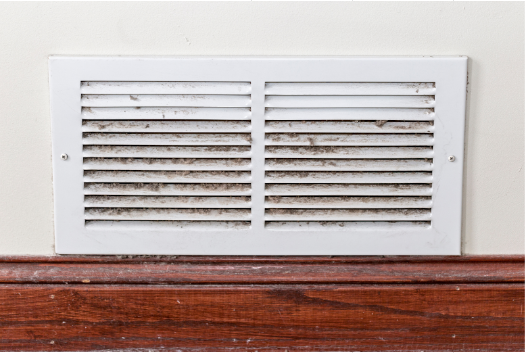How Often Do I Need to Clean My Air Ducts Each Year?

Air ducts are channels that carry cooled and heated air around your home. Just like all HVAC systems, air ducts require periodic cleaning maintenance to ensure they work at optimal efficiency.
According to the National Air Duct Cleaners Association (NADCA) a standard of practice for air duct cleaning states that every general rule, air duct cleaning should be performed every 3 to 5 years. Depending on what method you use, that cleaning recommendation can stretch to 6 to 8 years.
Some molds and other contaminants can lead to allergies, which could pose a health risk for your home and family — another reason why you might choose to have air ducts cleaned sooner rather than later.
When Is Air-Duct Cleaning Necessary?
The Environmental Protection Agency (EPA) believed indoor air can be 2 to 5 times more toxic than the outdoor air. There are lots of impurities, which follow the air ducts through your home, where they can cause destruction to your home and health.
Other than periodic air duct cleaning by a qualified H.V.A.C. and indoor air quality contractor, a routine visit to get your ducts in a row may be warranted in these instances.
You Move from Old House
When do you have to have your ducts cleaned? That’s a question challenging new and existing homeowners. When you are moving in a new place, specially if the previous owner was a smoker or a pet-owner or has not taken service of the ducts for a long time (in past three years) you need air duct cleaning.
When you build a new home, air duct cleaning helps you remove construction debris, such as drywall dust, from your home. A home remodeling project should merit a thorough cleaning, because sawdust and other debris can get sucked into your ducts.
You See Mold or Smell Musty Air in Air Ducts
Mold loves being in damp and tough to-aspire areas as your air ducts. Cleaning should occur on affected ductwork if you see visible mold, or have a musty smell, or symptoms ranging from itchy eyes and nasal congestion to coughing, he said.
A dependable service can fix the issue by treating the mold, cleaning the rooms to kill existing mold and cleaning up to prevent it from coming back.
Air Duct Pest Infestation
Creepy crawlers can take up residence in your ducts and contaminate the air delivered throughout the house with their detritus and scent.
If you find vermin inside or around ductwork, or are noticing a drop in your system’s performance, a proper cleaning can remove vermin and prevent them from pestering you again in the future.
Dust or Debris Buildup in Your Air Ducts
In addition, dust, pet dander, dead skin cells and harmful allergens can build up over time in your ductwork.
This additional debris can show up visibly as poofs of dust shooting out of vents. Buildup can contribute to respiratory and other health issues for you and your family, and it can decrease the system’s airflow and effectiveness.
According to the NADCA, “The U.S. Department of Energy indicates that 25 to 40 percent of the energy used to heat or cool a home is wasted.” It can also shorten the lifespan of not just the system but also your wallet. And hence the question, how to improve the air flow in air ducts?
Professional duct cleaner will vacuum all this dust and muck out of your air ducts ensuring that the airflow that is circulating through your house remains optimal and clean for your family to breath comfortably and with ease.
Severe Cold or Allergy-like Symptoms
People with clean ducts, on the other hand, generally report better health. But if your ducts are dirty, they’re delivering dirty air that can aggravate or even cause allergies and coldlike symptoms in people who are in the house. Dust mites that feed on human detritus may make up part of the built-up material found in air ducts and can provoke asthmatic and allergic responses.
It can especially make family members who already have respiratory problems sick when exposed to unhealthy air quality. When we mention patients like elderly and newborns, it will also be sensible to go for air duct cleaning if the house has patients or children.
